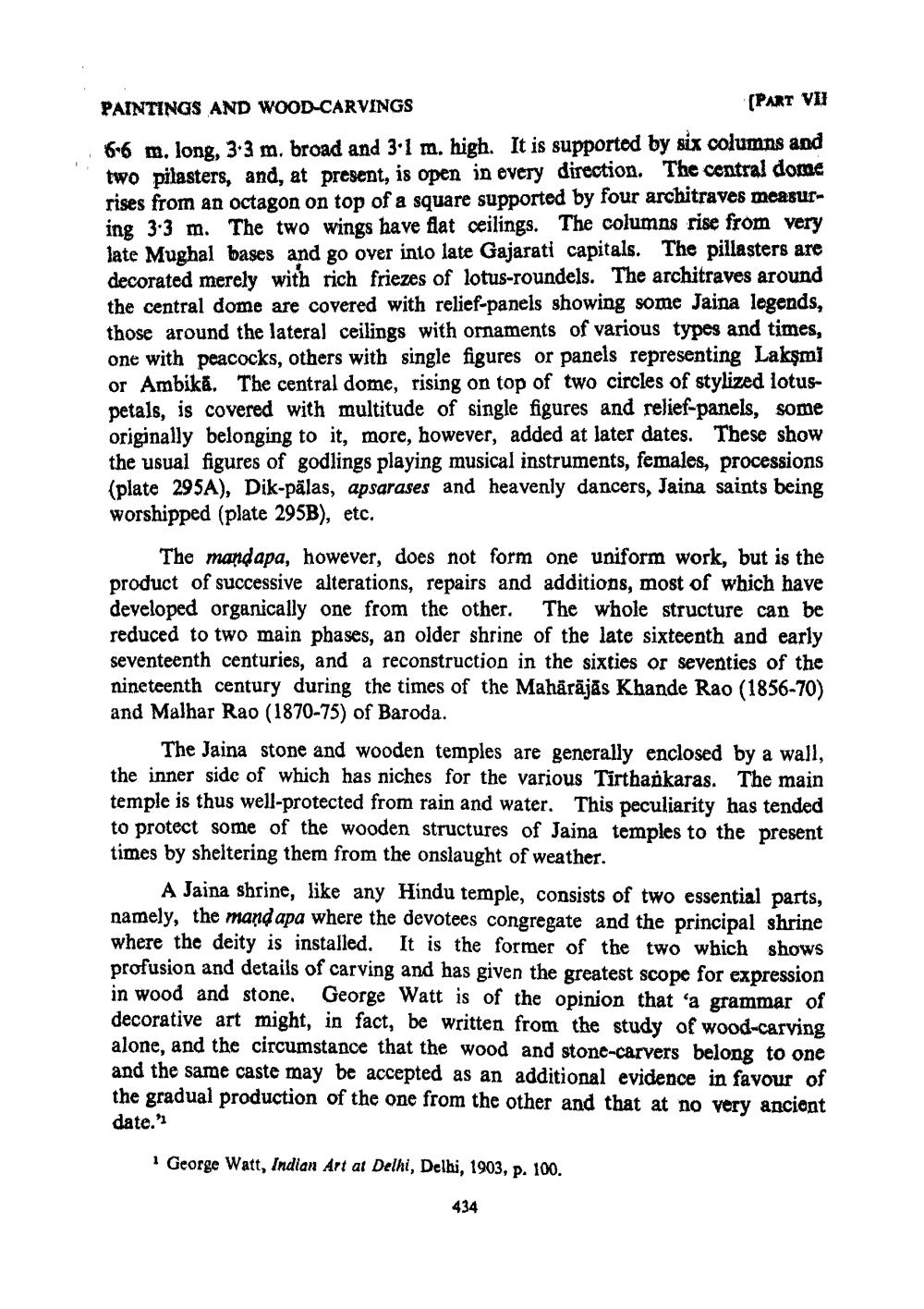________________
PAINTINGS AND WOOD-CARVINGS
(PART VII
6-6 m. long, 3.3 m. broad and 3.1 m. high. It is supported by six columns and two pilasters, and, at present, is open in every direction. The central dome rises from an octagon on top of a square supported by four architraves measuring 33 m. The two wings have flat ceilings. The columns rise from very late Mughal bases and go over into late Gajarati capitals. The pillasters are decorated merely with rich friezes of lotus-roundels. The architraves around the central dome are covered with relief-panels showing some Jaina legends, those around the lateral ceilings with ornaments of various types and times, one with peacocks, others with single figures or panels representing Laksmi or Ambika. The central dome, rising on top of two circles of stylized lotuspetals, is covered with multitude of single figures and relief-panels, some originally belonging to it, more, however, added at later dates. These show the usual figures of godlings playing musical instruments, females, processions (plate 295A), Dik-pälas, apsarases and heavenly dancers, Jaina saints being worshipped (plate 295B), etc.
The mandapa, however, does not form one uniform work, but is the product of successive alterations, repairs and additions, most of which have developed organically one from the other. The whole structure can be reduced to two main phases, an older shrine of the late sixteenth and early seventeenth centuries, and a reconstruction in the sixties or seventies of the nineteenth century during the times of the Mahārājās Khande Rao (1856-70) and Malhar Rao (1870-75) of Baroda.
The Jaina stone and wooden temples are generally enclosed by a wall, the inner side of which has niches for the various Tirthankaras. The main temple is thus well-protected from rain and water. This peculiarity has tended to protect some of the wooden structures of Jaina temples to the present times by sheltering them from the onslaught of weather.
A Jaina shrine, like any Hindu temple, consists of two essential parts, namely, the mand apa where the devotees congregate and the principal shrine where the deity is installed. It is the former of the two which shows profusion and details of carving and has given the greatest scope for expression in wood and stone. George Watt is of the opinion that 'a grammar of decorative art might, in fact, be written from the study of wood-carving alone, and the circumstance that the wood and stone-carvers belong to one and the same caste may be accepted as an additional evidence in favour of the gradual production of the one from the other and that at no very ancient date."
1 George Watt, Indian Art at Delhi, Delhi, 1903, p. 100.
434




